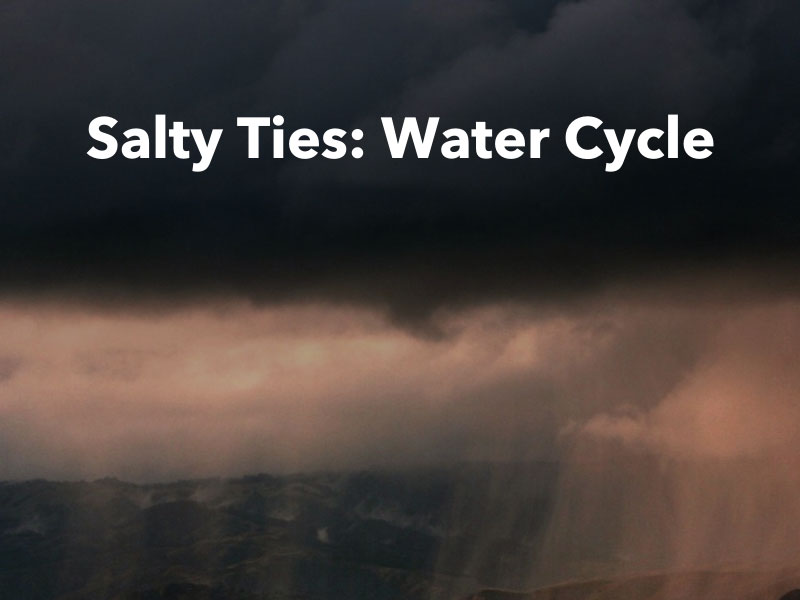Water moves through the earth system. Not only in flowing rivers but as a continual cycle of evaporation and as rain and snow. Over 96% of Earth's water is contained in the ocean. So, it is not surprising that ocean plays a driving role in the global water cycle. Moreover, patterns of ocean salinity reflect – to some extent – water cycle trends.
Analyzing these trends is critical because global warming has intensified the water cycle. Warmer air can hold more water. This can increase the atmosphere's potential to evaporate and precipitate. Scientists use salinity data to analyze such trends over the ocean. For the most part, areas that are dry are getting drier and wet areas are getting wetter. How does this affect salinity? Low salinity – or "fresh" areas – are getting fresher and salty areas are getting saltier. Satellites reveal changes at the ocean surface while in-water instruments see it at depth. But the "salty dialog" between the surface and depth is complex. Deeper waters act as a buffer, dampening changes on the surface, but are also impacted by surface changes. Such complexity is one reason why salinity is a key focus of climate change studies.

The ocean plays a large role in the global water cycle. As such it is not surprising that any changes in ocean conditions (e.g., from climate change) will globally impact that cycle. Current evidence suggests that warming climate conditions are leading to an intensification of the water cycle, but the details of that relationship with the ocean (e.g., patterns and rates) remain unclear. This review paper uses observations and models to examine changes in the ocean water cycle and salinity from 1988 to 2017. Though current studies differ slightly in their results, global patterns are clear - the poles will get fresher, the subtropics saltier, and the tropical rain belt fresher.
Yu, L., Josey, S.A., Bingham, F.M., and Lee, T. (2020). View the full paper.
As we consider how the water cycle may change with a changing climate, it is important to fully understand the water cycle in its present state – how much water is in each compartment (e.g., ocean, atmosphere, land) and how does the water move between those compartments (e.g., evaporation, precipitation, riverflow). At this point, however, we are unable to calculate precise values for many of these elements, leading to a globally imbalanced water budget – i.e., calculations showing a loss or gain of water on the planet. In this article, the authors seek to make an account of the current state of understanding for each compartment and flux in the water cycle and provide suggestions for how we may enhance our ability to measure them and produce a global water cycle balanced within 5% annually.
Dorigo, W. et al. (2021). View the full paper.
It is well established that the ocean plays a large role in the global water cycle. However, as the water cycle has intensified over the last few decades due to human induced changes, ocean salinity has not changed concomitantly - areas with more rain have not always decreased in salinity and while the ocean water cycle has globally intensified by 5%, surface salinity intensified by less than 1%. In this paper, researchers examine this apparent disconnect using observations and modeling data.
Vinogradova, N.T. and Ponte, R.M. (2017). View the full paper.